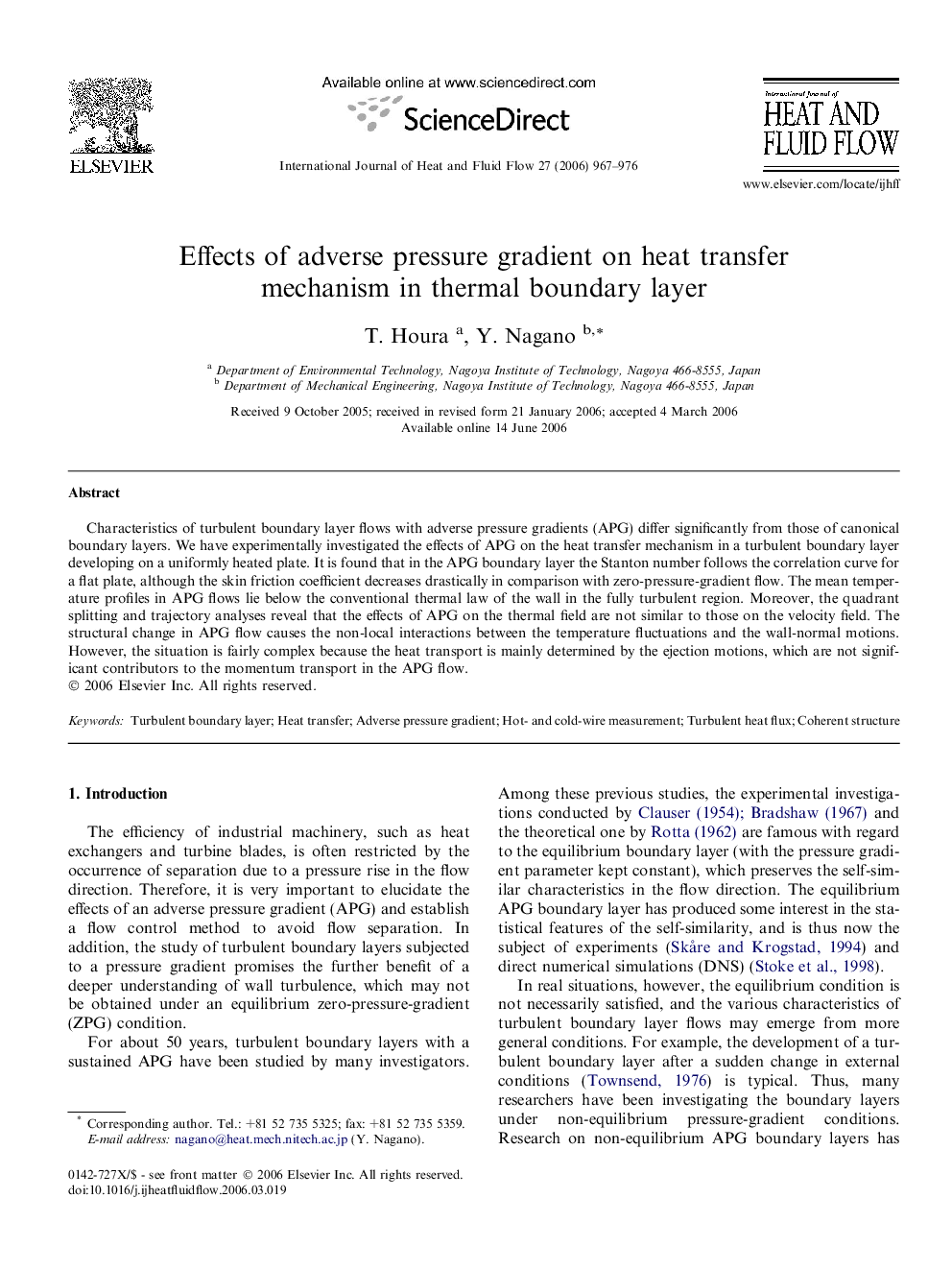| Article ID | Journal | Published Year | Pages | File Type |
|---|---|---|---|---|
| 656255 | International Journal of Heat and Fluid Flow | 2006 | 10 Pages |
Characteristics of turbulent boundary layer flows with adverse pressure gradients (APG) differ significantly from those of canonical boundary layers. We have experimentally investigated the effects of APG on the heat transfer mechanism in a turbulent boundary layer developing on a uniformly heated plate. It is found that in the APG boundary layer the Stanton number follows the correlation curve for a flat plate, although the skin friction coefficient decreases drastically in comparison with zero-pressure-gradient flow. The mean temperature profiles in APG flows lie below the conventional thermal law of the wall in the fully turbulent region. Moreover, the quadrant splitting and trajectory analyses reveal that the effects of APG on the thermal field are not similar to those on the velocity field. The structural change in APG flow causes the non-local interactions between the temperature fluctuations and the wall-normal motions. However, the situation is fairly complex because the heat transport is mainly determined by the ejection motions, which are not significant contributors to the momentum transport in the APG flow.
